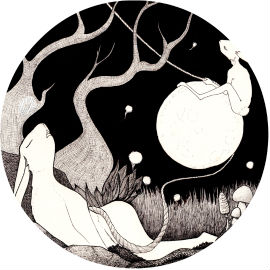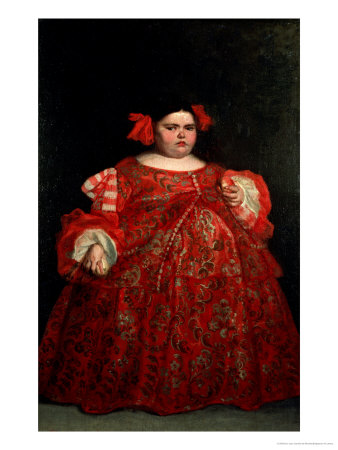The foam photography museum is on the Keizersgracht in Amsterdam. Recently, I went there to see an exhibition of photography by Diane Arbus, the American photographer.
The exhibition is laid out over several floors, with narrow stairways leading up and down between rooms. This is not a museum for anyone with mobility issues. The exhibition rooms are stark and intimate. Each one like a small conversation the viewer enters into.
Arbus’ photographs are predominantly portraits. She was most famous (or infamous) for her portraits of eccentrics and outsiders: criminals, nudists, transvestites and the physically or mentally handicapped. And yet there are many portraits in the exhibition, and in the retrospective publications on offer in the bookstore, of a more diverse range of Americans.
As you enter the exhibition, across a kind of metal transom, a curator’s introduction states that the works are being shown:
in the true eloquence of their silence. The show will enable each viewer to encounter the images much as the photographer encountered her subjects: directly and unencumbered by preconceptions.
In practice, this means that each photograph is presented as simply as possible. They are framed in the same simple way, titled and dated. And that is all. The viewer encounters these enigmatic faces without the safety net of a curator’s expert opinion.

Identical twins, Roselle, New Jersey, 1967
The photograph’s titles are not artistic or metaphoric, but simple statements: Identical twins, A Jewish giant at home with his parents, Two women walking in Central Park. The titles seem like an attempt to deny any engima or mystery, but by their very bluntness, their obviousness, hand in hand with the lack of curatorial narrative, the simplicity of the presentation opens out the silence of the works. The mysteriousness of the subjects, and that antique but persistent tension between the documentary nature of photography, and its gestural, suggestive, artistic expressiveness.
The images seem to me by turns tragic, invasive, delicate and magisterial. The figures glare at the viewer, but more often adopt a kind of glazed, unfocused gaze. They are looking out at the viewer, but they are not interested in you. Many of them seem aware, however, of the interest they hold for the photographer and, by extension, the viewer. For you.
Many of the images intrigued and mesmerised me. One that I keep coming back to is a portrait of Susan Sontag. In fact, Arbus photographed Sontag at least twice – once, alone in her bedroom and later in an open space with her son, David Rieff. The portrait in the exhibition is this earlier one.

Susan Sontag
Sontag and Arbus seem an interesting combination to me. Two photographers, two women. Two strong personalities, each with complex and almost obsessively examined relationship with themselves, their cameras, and the practice of photography.
Sontag is well-known for her essays on photography; she also wrote a highly critical essay about Arbus’ work (‘American Seen Through Photographs, Darkly’ from On Photography, 1973). Sontag’s essay is, however, less a critique of the works themselves than of the challenges in approaching and appreciating photography as art. Which subjects, under which conditions, constitute art? What role should beauty play in art, and in the art of photography? For Sontage, Arbus’s works were a definitive challenge. Art, she suggests, requires “majesty and beauty”. But, for Sontag, Arbus’s photographs were often ugly images of ugly people: “pathetic, pitiable, as well as repulsive”. In the same essay, she writes:
photographs do not explain; they acknowledge. Robert Frank was only being honest when he declared that ‘to produce an authentic contemporary document, the visual impact should be such as will nullify explanation.’ If photographs are messages, the message is both transparent and mysterious. ‘A photograph is a secret about a secret,’ as Arbus observed. ‘The more it tells you the less you know.’ Despite the illusion of giving understanding, what seeing through photographs really invites is an acquisitive relation to the world that nourishes aesthetic awareness and promotes emotional detachment […] The reason that humanism has become the reigning ideology of ambitious professional photographers – displacing formalist justifications of their quest for beauty – is that it masks the confusions about truth and beauty underlying the photographic enterprise.
In a sense, this final sentiment is the lasting effect, for me, of walking through a series of quiet rooms furnished with Diane Arbus’ photographs: a ‘confusion about truth and beauty’. But it isn’t necessarily, as Sontag seems to imply, a naive or end-stopped confusion; instead what I have carried away from a morning with these photographs is a muscular, restless, productive confusion. A confusion that has me looking more and more closely at these images, with their air of fierce detachment. Their comedy and humanity and sadness. Peering into them, watching these people peering back. Wondering where the art lies, and where it stops, or fails. Wondering what role beauty plays in these images, and in art. Where art and beauty fall away from each other, and what strange creatures emerge in the rupture between them.

Child teasing another, NYC, 1960
[When I visited the exhibition, I was sure the title of this work was ‘Child teaching another’, and I laughed out loud, in a kind of excess of pleasure, at the shared enjoyment I read in their faces, and how strongly it recalled the enthusiastic joy of childhood friendships]
The photographs seem to me, in that light, imbued with a sense of tenderness and intimacy. Of loneliness and gravitas, and gritty discontent. What intrigues me most in these images is the lack of shame. The pure bravado of such a diverse range of subjects. Here I am, they say. And yet, that’s not quite it, either. I think Arbus herself said it best when she said that her images can only ever capture:
the space between who someone is and who they think they are

Self-portrait, pregnant, nyc, 1945
More Arbus?
- The photography of Diane Arbus
- FOAM Gallery website
- ‘Diane Arbus: Humanist or Voyeur?’ in The Guardian recently …
- ‘America Seen Through Photographs, Darkly’ by Susan Sontag

What a delectable return of Perilous Adventures. These photos remind me of some of the Velasquez portraits that were in Brisbane recently for the Prado exhibition. In particular, portraits of the royal dwarves glaring at the painter, and at us, challenging our right to look and judge. Fascinating but uncomfortable to view. I had to drop my eyes, but kept looking back.
Hi Sandra, Thanks for dropping by! What a wonderful insight! I was also fascinated by the images of the dwarves in the Prado exhibition. Particularly La Monstrua (the Juan Carreño de Miranda portrait of Eugenia Vallejo) and the strikingly more sympathetic/humanised portrait of Francisco Lezcano by Velazquez. I particularly loved La Monstrua for the defensive, sulky face the girl wears. I guess Sontag would have focused on the way her glare emphasises her lack of beauty, but for me - like you, I think - it's the way she refuses to play nice, to pretend she's complicit in being portrayed as a 'freak', that strikes at the heart.
La Monstrua (Dona Eugenia Martinez Vallejo, aged 6). Juan Carreño de Miranda. c.1680